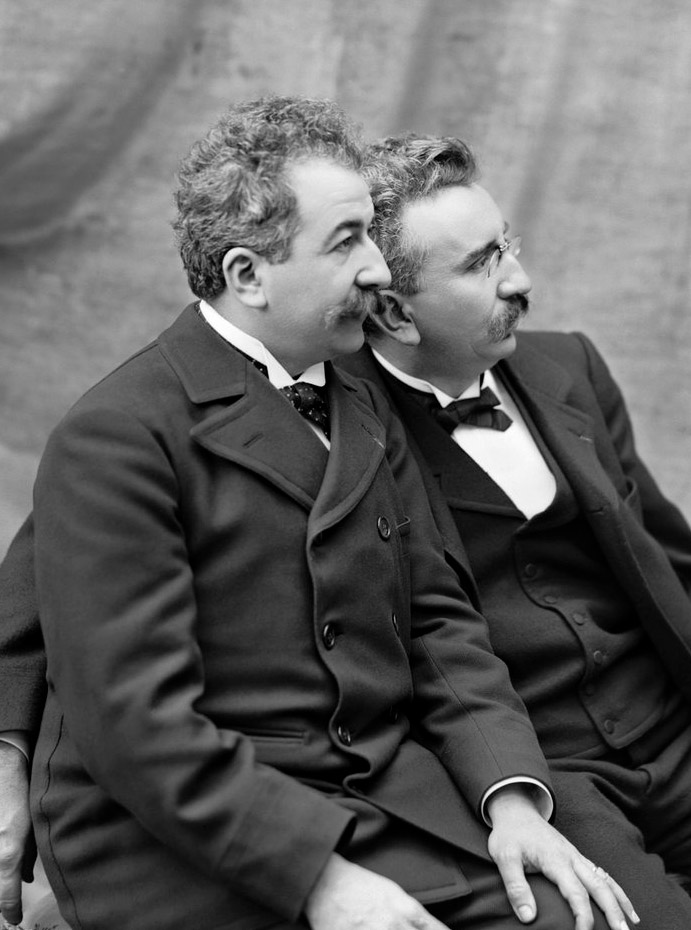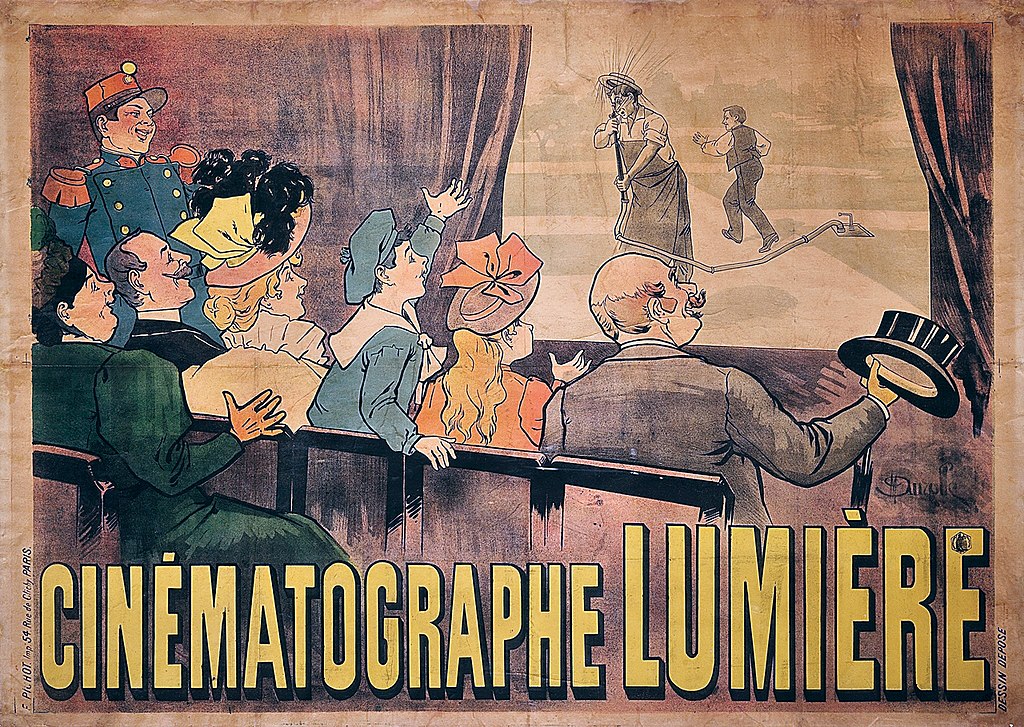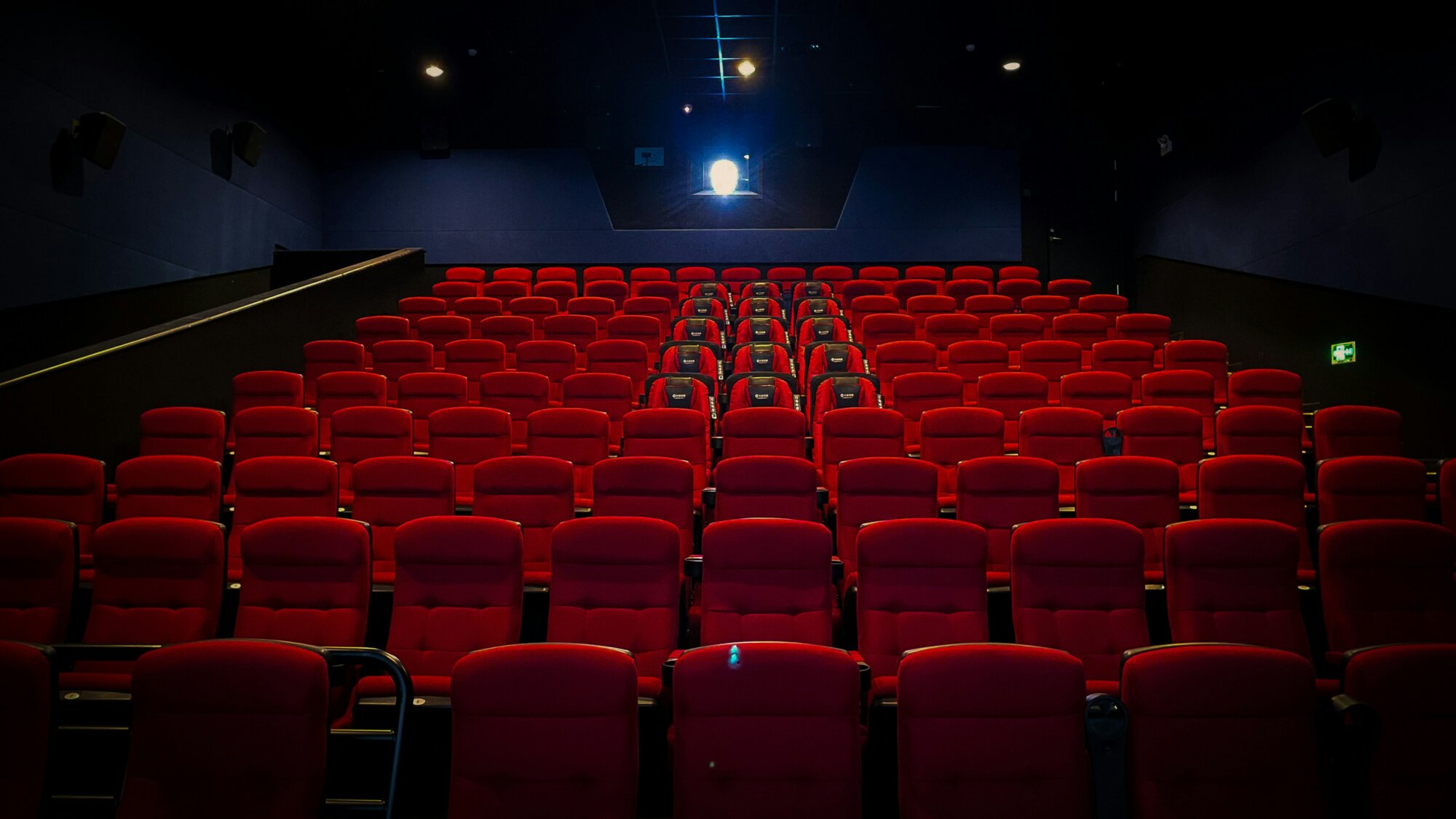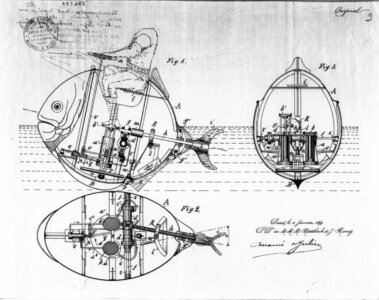As French cinema regains some of its vigour and with two new movies already entering the top 50 most-watched films in its history in 2024 (Artus’s Un p’tit truc en plus and Le Comte de Monte-Cristo, by Matthieu Delaporte and Alexandre De La Patellière), we wanted to celebrate the incredible invention which led to it: the cinematograph, conceived by the “Lumière brothers.”
In our article, you will discover the history of Auguste and Louis Lumière, these emblematic figures of cinema and photography, and their path towards the creation of cinema.
A family passion for photography
Auguste and Louis Lumière were born in October 1862 and October 1864, respectively. They were the sons of Antoine Lumière, an industrialist, painter, and photographer. Initially a photographer in Besançon (France), Antoine Lumière moved with his family to Lyon to escape the frontline regions during the 1870 Franco-Prussian war. In his workshop, he also sold blank photographic plates for wealthy individuals who were starting to become interested. His two sons grew up in this world and developed a passion for photography. They studied at La Martinière, Lyon’s largest technical college, and their father suggested involving them in his shop. In 1881, when he was 17 years old, young Louis invented ready-to-use dry photographic plates. Unlike “wet” plates, dry plates did not need to be developed immediately, which gave the photographer more freedom. His improved plates, known as “Etiquette Bleue,” which allowed photos to be taken with a very short diaphragm opening time, led to the opening of a factory with serial production.
Thanks to the enormous success of these plates, the Lumière family built other factories, and by the mid-1890s, was running the largest photographic manufacturing company in Europe.

The cinematograph
The story of the cinematograph begins with Antoine Lumière’s visit to Paris for the presentation of the kinetoscope in 1894. The device, conceived by Thomas Edison, allowed people to watch films all alone, thanks to a continuous scrolling system of images through a lens. Antoine was convinced of the potential of moving images, but he believed they should be projected onto a screen. He therefore suggested that his sons pause their current research and work on this subject.
Rapidly, Auguste and Louis conceived the “Lumière kinetograph,” a device operated by a crank, much more advanced than Edison’s device. This was the cinematograph.
With the help of an engineer, Jules Carpentier, they finalized the mechanism and integrated it into a box from which only emerged the crank, the lens, and a space for a blank film reel. The device was less noisy and lighter than Edison’s.
Louis Lumière soon shot his first film, and thus, on December 28, 1895, the very first paid public screening in the history of cinema took place in Paris, organized by the Lumière brothers at the Grand Café, in front of only thirty spectators. A true revolution!

The legend says that, during the screening of the film “Arrival of a Train at La Ciotat Station,” one of the first films shot by Louis Lumière and projected in 1896, the audience was frightened at seeing a train rushing towards them, and some spectators screamed or ran away. This indicates the quality of the images at the time!
More than 170 patents to their credit
Considering their entire careers, the Lumière brothers filed more than 170 patents, mainly in the field of photography. In addition to the dry photographic plate in 1881 and the cinematograph, these include the autochrome plate (color photograph process) in 1903, photostereosynthesis (relief photography), and the photorama (panoramic photography technique) in 1900. Auguste Lumière eventually left cinema to his brother Louis to excel in another field he preferred: biology, which allowed him to create a laboratory and medications.
Antoine Lumière’s house, their father, has become the Institut Lumière, an association dedicated to the dissemination and preservation of film heritage.
See the Institut Lumière website: www.institut-lumiere.org




